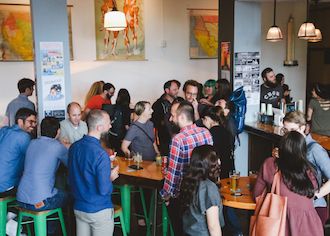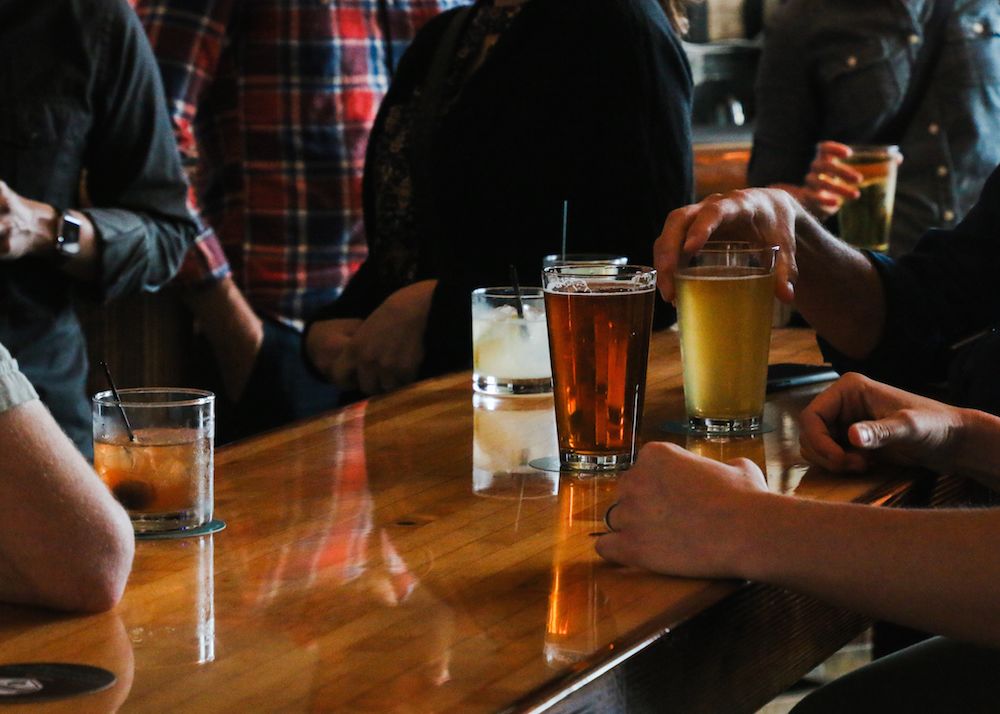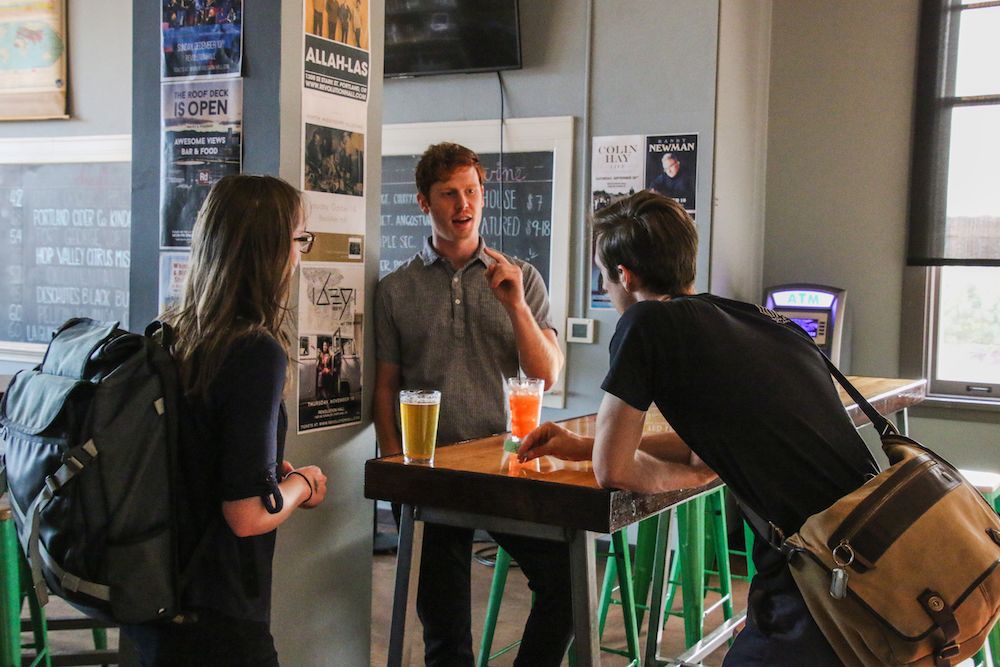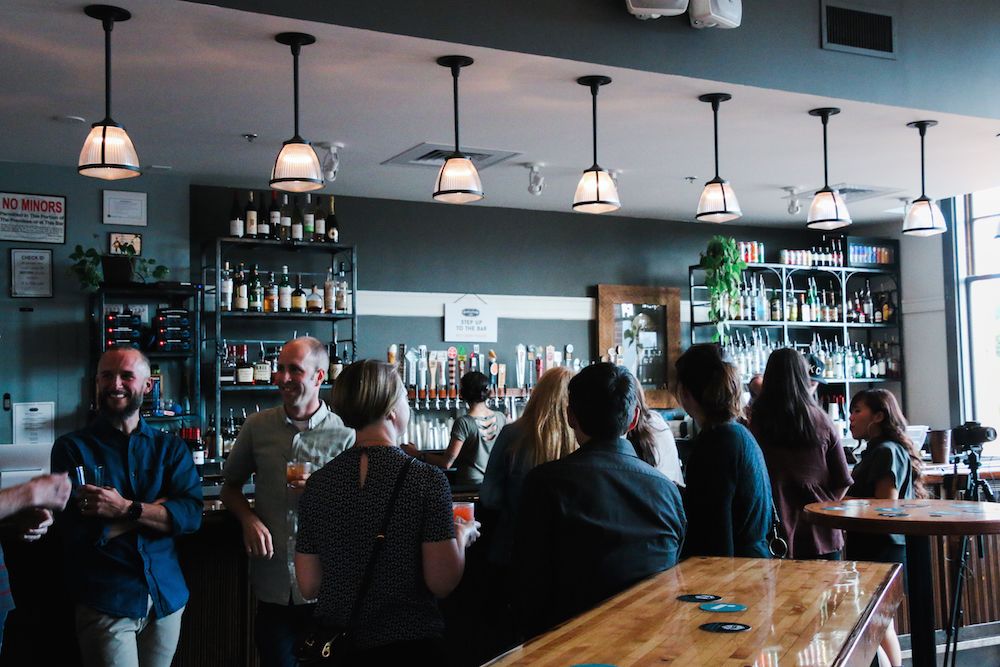Go Back
On September 14th, Camp Optimization returned after a two-month summer hiatus – and we couldn’t have been more excited. The event was held at the Assembly Lounge at Washington High School, where we were joined by Opal Labs’ Director of Design, Andy Hugelier.
Welcoming Andy Hugelier
Andy is a designer by trade with an agency background, who joined the team at Opal about two-and-a-half years ago. He was interested in the problems they were solving there, and has learned a lot along the way about measuring success, which can sometimes be an unclear process. Andy’s presentation, “What does success look like without a clear KPI?” revolved around this very subject. He walked us through some of the challenges he’s faced, and strategies he’s utilized for measuring success in an ambiguous environment.
Opal is a collaboration platform for brand marketing teams. It offers a single space for teams to work on a project from beginning to end, and serves to unite the marketing organization. The platform is utilized by many different types of teams, from large global teams, to disparate teams and silos – both big and small. Through the tool, teams can ideate around marketing strategy, develop a content roadmap, create and collaborate on content, while having the visibility to know exactly what their brand story is going to look like before it’s out to market. The innovative and visionary teams that the company works with (such as NASA, Apple, Nike and Burberry) help push the platform the be as good as it can possibly be, simply by doing their jobs.
The Challenge
It’s no wonder Andy has so much insight into the subject of success measurement! He explained that he’s always struck by how collaboration affects project outcomes, and that his main goal is to help teams do their jobs better. But with teams and projects with such diversity, how can this be understood and measured across the board? He admits that it is complicated to understand the dynamics between teams and how they work together, especially as their behavior changes while their experience using the platform matures. But with some intentionality and process, trends become clear. “It all begins with taking a closer look at what collaboration means to different teams. For example, you can observe a global brand team and a small design team working with the same tools, and see wildly different patterns occur based on who’s using the tool and how the group interacts with one another,” Andy explained. Each team, and the agencies connected to them, have very specific needs that drive their engagement and progress. This can make it tricky to evaluate performance.
Step 1: Break things down into smaller, more measurable parts
Especially with a fluid product such as Opal, it can be daunting to develop a measurement approach, however Andy discussed a few simple steps to better understand and define success. The first tactic Andy applies to illuminate success is breaking things down to take a closer look at each phase or step in a process. This involves getting a better understanding of the people working within a team, and how they approach a project. User archetypes, he explained, can be very helpful with this process. Archetypes can be created and mapped to various responsibilities a team has, and to observable repeated patterns. Some archetypes he’s worked with in the past include “the Creative,” “the Strategist,” “the Manager,” and “the Stakeholder.” By looking at the archetypes and attaching them to a specific user, patterns can be segmented to gain a better view of what is important to each archetype, and which outcomes will result. From individual archetypes, we can make the jump up to team archetypes. Because the behaviors of a user are dependent on the teams they operate within, it’s important to also get a grasp of what the team’s needs are. For example, teams at an agency will have different needs than one at a studio, or a company’s regional brand team. Not only will their needs differ, but they’ll also have different personalities and decision-making styles. A large company like Apple or Nike will adopt a top-down decision-making style, whereas a small creative agency will likely distribute decision-making amongst the team. By understanding the dynamics of both users and teams, one can gain a better idea of what’s working for a particular team, and what’s not.
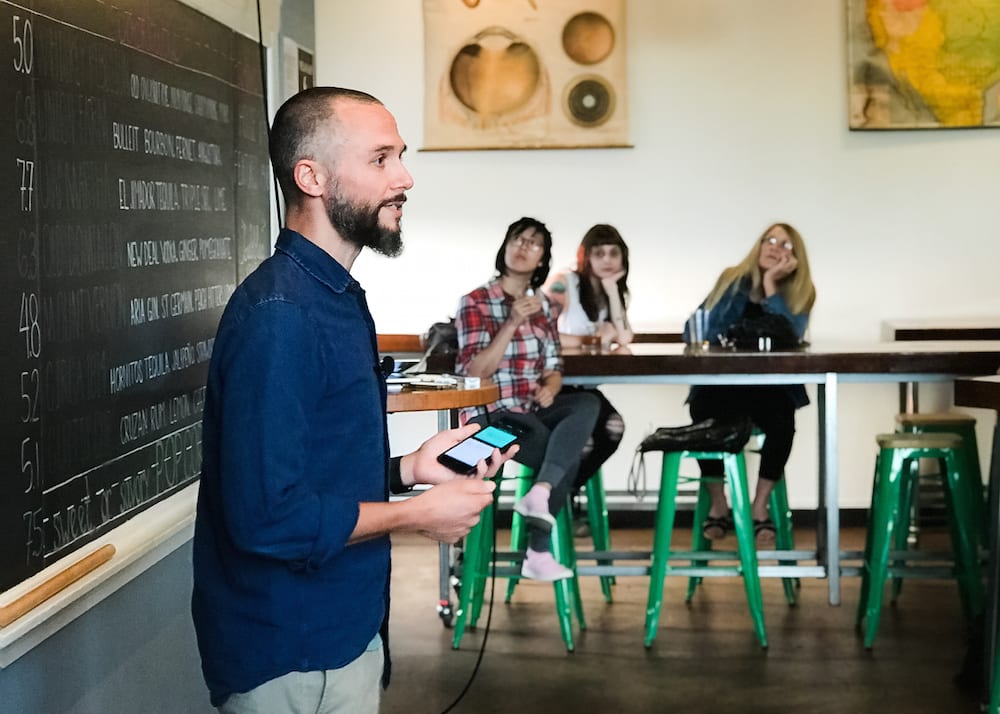
Step 2: Focus on a smaller sample set
The second tactic Andy applies for measuring success in an ambiguous environment is to focus on a smaller sample set, instead of trying to look at all data across all users. User testing is great to focus on for validating an idea initially. There may be similar teams that use a platform for different reasons, so it’s important for data to not exist in a vacuum. Looking at a smaller set of data from different angles allows one to learn more about situational factors, and better informs beta testing efforts. By working out any kinks on a smaller scale, go-to-market risks can be reduced to help ensure long-run success.
Step 3: Understand the outcome
The third tactic Andy spoke about was making a conscious effort to understand what the outcome of collaboration needs to be. After processes have been broken down into smaller parts, and a smaller sample set has been focused on, metrics can be identified to indicate whether a process has been successful. Has a team accomplished what it intended to? Has their timeline become more efficient? Are they able to communicate less frequently, but more effectively? Depending on the nature of collaboration, these metrics can vary quite a bit. By turning qualitative data into quantitative data, it becomes clearer how collaboration affects an organization. Looking at successful users, and using them as a model to reverse-engineer what success looks like can help with this step. Andy’s goal is to ultimately develop a litmus test of what the outcome of good collaboration looks like. For now, the core tenets he relies on are visibility, alignment, and efficiency.
Can failure be predicted?
Andy also spoke about factors that indicate when a team is going to fail. He explained that a Customer Success Team is an important element in understanding who’s interacting with a platform, and what their goals are. By providing support to users and checking in with them throughout their process, it can be easier to understand when things are working, and to identify opportunities to intervene when necessary. Andy noted that generally speaking, a smaller, more isolated team will face more challenges with scaling within a company compared to an initial company-wide adoption. “A tool is only as powerful as the amount of people who are involved,” he explained, and mentioned that company culture also plays a big role in defining and achieving success. Teams with an attitude of wanting to reinvent their processes to figure out a better way to work are much more likely to succeed. On the opposite end of the spectrum, teams who are attached to their current methods and simply want to become faster at what they do will face significantly more challenges, as process improvements are fighting against the existing company culture. Being open to new ways of collaborating is vital to creating an environment for success.
Thank you, Andy, for sharing your insights with us! Mark your calendars for our next Camp Optimization meet-up on November 9th at Buckman Public House, where Silas Sao of Cloudability will join us to talk about the importance of ADA Compliance and making the internet more accessible.
Who is roboboogie?
roboboogie is a Portland-based digital design and conversion optimization agency, partnering closely with brands to improve conversion rates, nurture brand advocacy and increase customer value.
Who is Opal?
The Opal Platform is designed for marketing team collaboration, facilitating the production and orchestration of the brand marketing process. Opal’s StoryFirst™ Framework enables brands with an efficient structure, reducing complexity and aligning teams so they can produce brand stories that connect and perform.


